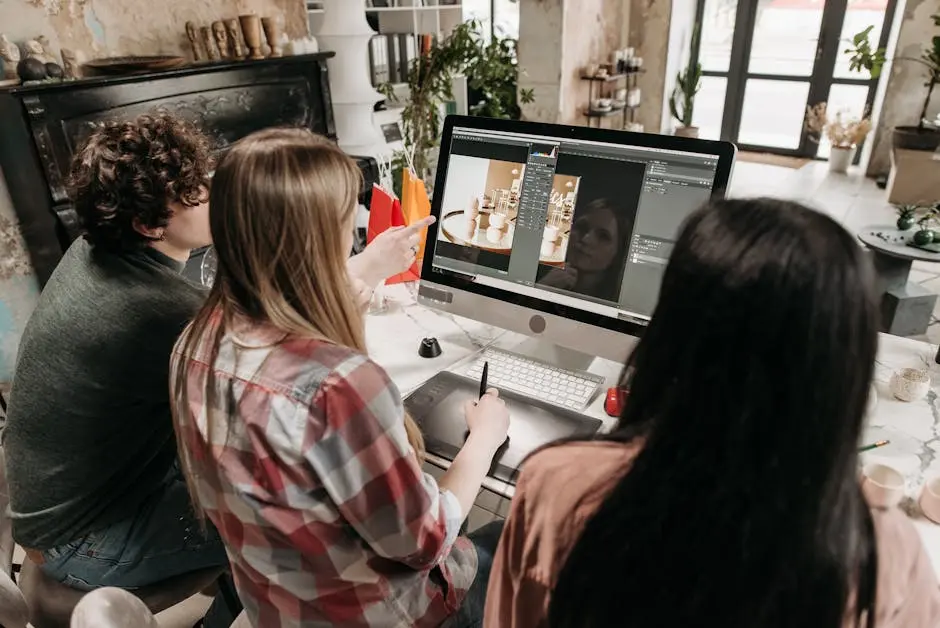How Can Patterns Improve Design Workflow?

Design patterns are like a secret weapon for improving your design workflow. They offer a structured methodology to tackle repetitive tasks, streamline processes, and inspire creativity without starting from scratch every time. In this FAQ, we'll explore how patterns can enhance your design workflow and make your work more efficient and enjoyable.
Understanding the Basics of Design Patterns
Design patterns are universally recognized solutions to common problems. By understanding them, designers can save time and avoid potential pitfalls in their workflow. Patterns originate from identifying enduring designs that have proven successful in complex environments. They encapsulate best practices and knowledge, allowing designers to apply these insights to new problems. Engaging with and mastering these patterns not only simplifies processes but also enriches a designer's toolkit, promoting a deeper grasp of both design and functional requirements.
Think of patterns as a shared language that facilitates communication among designers. Just like codes that programmers use, patterns provide a way to discuss and resolve problems efficiently. By incorporating patterns into your vocabulary, you can more effectively collaborate with other designers and ensure that you're on the same page even before starting a project. This shared understanding aids in maintaining continuity and coherence throughout a project's lifecycle.
Identifying Repetitive Design Tasks
One of the primary uses of patterns is to handle repetitive tasks efficiently. Identify areas in your workflow that occur frequently and could benefit from a standardized approach. For instance, elements like navigation bars, sliders, or form layouts are repetitive yet crucial elements in web design. By using established patterns for these components, designers can streamline their efforts and focus on more unique aspects of their projects.
Identifying these repetitive elements isn't just about saving time; it's also about reducing errors and maintaining quality. When tasks are repeated manually, the likelihood for inconsistency or error increases. Applying a pattern minimizes human error and ensures uniformity across deliverables, saving not only time but also enhancing the final product quality.
Incorporating design patterns can be particularly advantageous in scenarios where quick and consistent results are essential. As discussed in modern design workflows, streamlining repetitive tasks is crucial for maintaining high efficiency and productivity. This approach not only speeds up the delivery but also enables teams to focus on refining complex, innovative elements that require more creative input.
Incorporating Patterns for Consistency
Patterns help maintain consistency across projects by providing a set framework. This consistency can enhance the quality and reliability of your design output. When each team member adheres to the same set of patterns, the result is a harmonized and cohesive product, even when different parts are designed by different hands. This uniformity is vital in establishing a strong brand identity and user experience.
Using patterns also facilitates better communication both within the team and with clients. Since patterns offer familiar solutions, they can be referenced easily, reducing miscommunications and clarifying expectations. Ensuring all stakeholders understand and agree upon the patterns to be used can prevent unpredictable changes and align the project’s direction with its goals from the outset.
Some patterns can be instrumental in maintaining consistency across digital platforms. By drawing on Design Force's insights on streamlined processes, designers can ensure that various components like typography, colors, and interactive elements strengthen their cross-platform branding efforts. This approach not only maintains consistency but elevates user experience by offering predictable and intuitive navigation across different media.
Utilizing Patterns to Foster Creativity
While patterns promote consistency, they also allow room for creativity. By having a structured starting point, designers can focus on innovation rather than reinventing the wheel each time. The predictable aspects of patterns lay a reliable groundwork, upon which unique, creative ideas can grow. This setup alleviates the burden of solving basic design liberties and opens up space for exploring more groundbreaking solutions.
Patterns essentially act as a creative trampoline, giving designers the bounce to reach imaginative heights they might not otherwise attain. This is especially true for projects that demand significant creativity, like developing new brand identities or interactive media. With patterns managing the structural consistency, designers can experiment with bold color usage, bespoke graphics, or interactive stories that captivate audiences far beyond static design limitations.
Adapting Patterns to Fit Specific Needs
Patterns are versatile and can be adapted to fit the specific needs of a project. They are not rigid rules but flexible tools that can evolve with your design requirements. It's essential to view patterns as a starting point rather than an endpoint. This perception allows designs to deliver on specific project needs while still benefiting from the advantages of established solutions.
Successful adaptation means recognizing when a design pattern serves its purpose and when it can be enhanced or altered for greater effect. Patterns are meant to be broken when innovation calls for it. Understanding both the purpose and flexibility of a pattern can lead to designs that are not only functional but also innovative and engaging. Embracing this dynamic approach ensures that the patterns truly serve each unique project optimally, enhancing their value across different contexts.
Furthermore, leveraging resources like Roam can inspire new ways to adapt patterns, drawing insights from creative playlists that boost productivity and creativity. These playlists integrate various musical genres to promote focus, much like patterns integrate universal solutions to promote efficiency in design. Through such cross-disciplinary inspiration, patterns can be transformed and adapted to push the boundaries of what’s creatively possible.
Embrace Patterns for a More Efficient Design Workflow
Incorporating patterns into your design workflow can revolutionize the way you work. By understanding and utilizing these tools effectively, you can enjoy increased efficiency, improved consistency, and a boost in creativity. Remember, patterns are not set rules but flexible guidelines that can be tailored to fit each unique project.
Roam: Run your design business, not just your projects. Intuitive business management tools for graphic designers


.png)





